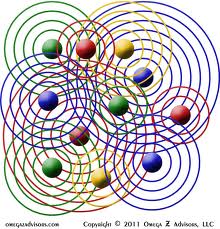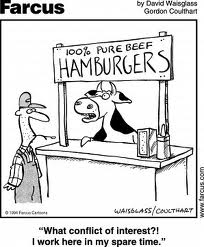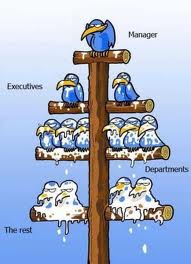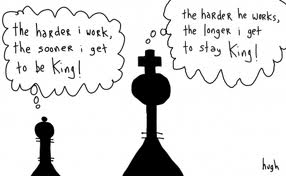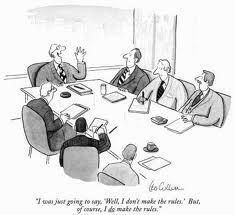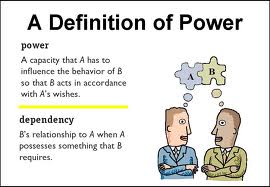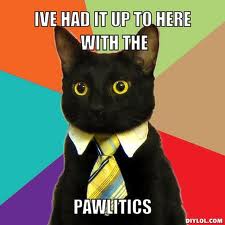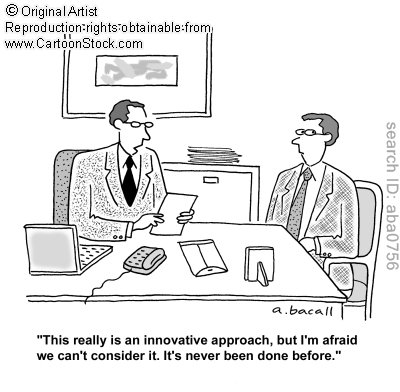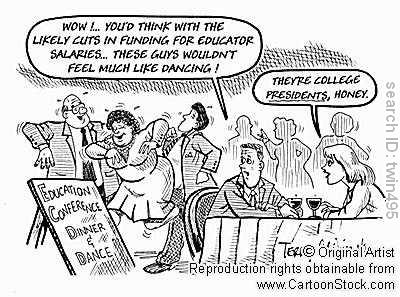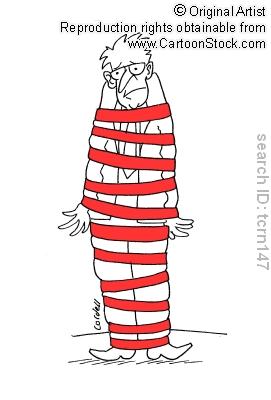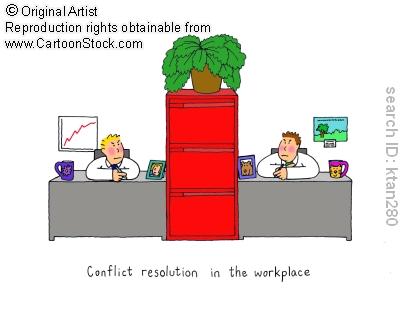Difference between revisions of "Class Session 5"
(Imported from Wikispaces) |
(Imported from Wikispaces) |
||
| Line 1: | Line 1: | ||
| − | {| | + | <div id="content_view" class="wiki" style="display: block"> |
| − | | | + | |
| − | + | =Class Session 5= | |
| + | {| class="wiki_table" | ||
| + | | style="text-align: center" | | ||
| + | <span style="display: block; font-family: georgia,serif; font-size: 220%; text-align: center">'''Organizations''' '''as''' '''Political Systems'''</span><span style="display: block; font-family: georgia,serif; text-align: center">'''Suzie Armstrong'''</span><br /> <span style="display: block; font-family: georgia,serif; text-align: center">'''Terry Fassanella'''</span><br /> <span style="display: block; font-family: georgia,serif; text-align: center">'''Madeline Goldman'''</span><br /> <span style="display: block; font-family: georgia,serif; text-align: center">'''J''''''ohn Hall'''</span><br /> <span style="display: block; font-family: georgia,serif; text-align: center">'''Terry Hinders'''</span><br /> <span style="display: block; font-family: georgia,serif; text-align: center">'''Marcia Strange'''</span><br /> | ||
| + | ---- | ||
| + | |||
| + | ---- | ||
| + | | style="text-align: center" | | ||
| + | [[Image:organizational_system.jpg| organizational_system.jpg]]<br /> | ||
| + | ! <br /> | ||
|} | |} | ||
| − | + | <br /> | |
| + | ---- | ||
| + | =<span style="font-family: Georgia,serif">Topic Overview:</span>[[Image:power_and_influence.jpg| power_and_influence.jpg]]= | ||
| + | <span style="color: #000000; font-family: Georgia,serif">This week’s readings focused on Organizations as Political Systems. Couched in this political framework are various layers. The layers discussed are centered on interests, conflict, and power. Often these components revolve around decision-making involving allocation of scarce resources. As a result, coalitions and alliances of groups with similar interests form to negotiate and bargain for these scarce resources. In turn, conflict arises between groups with varying interests. Moreover, Morgan asserts that while workplace conflict can promote competition and collaboration, it can also disrupt office productivity with personality clashes. </span><br /> <br /> <span style="color: #000000; font-family: Georgia,serif">Amid the readings by Cohen & March, and Morgan, there are multiple sources of power, many of which are rooted in control. This control includes finances, technology, rewards, and information. According to Clark, sagas are an everyday occurrence in the workplace, and to some extent, each work environment is defined by how these sagas enhance or diminish our work life. Although somewhat predictable, Bolman and Deal’s advice on positioning is quite relevant in politics and working through the stages of conflict. As a result from the assigned readings, a better understanding of the political systems framework is gleaned and the ability to more effectively lead an office or program within an organization is acquired.</span><br /> | ||
---- | ---- | ||
| − | = | + | {| class="wiki_table" |
| − | + | | | |
| − | + | '''<span style="font-family: Georgia,serif; font-size: 15px">Terminology</span>'''<br /> | |
| − | |||
---- | ---- | ||
| − | |||
| − | |||
| − | |||
| − | |||
|- | |- | ||
| + | | <span style="display: block; font-family: georgia,serif; text-align: left">'''Autocracy''': absolute government where power is held by an individual or small groups and supported by control of critical resources, property or ownership rights, tradition, charisma, and other claims to personal privilege'''Bureaucracy''': rule exercised through use of the written word, which provides the basis for a rational-legal type of authority, or “rule of law”'''Technocracy''': rule exercised through us of knowledge, expert power, and the ability to solve relevant problems'''Codetermination''': the form of rule where opposing parties combine in the joint management of mutual interests, as in coalition government or corporatism, each party drawing on a specific power base'''Representative democracy''': rule exercised through the election of officers mandated to act on behalf of the electorate and who hold office for a specified time period or so long as they command the support of the electorate, as in parliamentary government and forms of worker control and shareholder control in industry'''Direct democracy''': the system where everyone has an equal right to rule and is involved in all decision making, as in many communal organizations such as cooperatives and kibbutzim. It encourages self-organization as a key mode of organizing.'''Overbound system''': power is highly concentrated. Everything is tightly regulated.'''Underbound system''': power is diffuse. The system is loosely controlled.'''Tautology:''' Also known as "rhetoric". The process of using different words to say the same thing, even if the repetition does not provide clarity.</span><br /> | ||
|} | |} | ||
| − | <u>Summary of Class Readings</span></u></span> | + | <span style="display: block; text-align: center"><u><span style="font-family: Georgia,serif">Summary of Class Readings</span></u></span><br /> |
| − | {| | + | {| class="wiki_table" |
| − | || | + | | colspan="2" | |
| − | + | <span style="display: block; font-family: georgia,serif; font-size: 11pt; text-align: left">'''Bolman & Deal: Chapter 9 Power, Conflict & Coalition'''</span><span style="font-family: Georgia,serif; font-size: 110%">''Political Assumptions (pp. 194-195)''</span><br /> | |
| − | + | * <span style="font-family: Georgia,serif; font-size: 110%">Coalition members have differences in values, information, information, and perceptions of reality.</span> | |
| + | * <span style="font-family: Georgia,serif; font-size: 110%">Most important decisions involve allocating scarce resources.</span> | ||
| + | * <span style="font-family: Georgia,serif; font-size: 110%">Scare resources and differences in values put conflict in center of day-to day dynamics.</span> | ||
| + | * <span style="font-family: Georgia,serif; font-size: 110%">Goals and decision making emerge from bargaining and negotiating among stakeholders jockeying for their own interests.</span> | ||
| + | * <span style="font-family: Georgia,serif; font-size: 110%">Organizations are coalitions of individuals and interest groups.
</span><span style="display: block; font-family: Georgia,serif; font-size: 90%; text-align: left">''Implications of Political Propositions (p. 196)''</span><span style="font-family: georgia,serif; font-size: 110%">* Differences and scarce resources make power a key resource.</span><br /> | ||
| + | * <span style="font-family: Georgia,serif; font-size: 110%">Power is the ability to make something happen.</span><span style="display: block; font-family: Georgia,serif; font-size: 90%; text-align: left">''Organizations as Coalitions (p. 198)''</span><span style="font-family: georgia,serif; font-size: 110%">* Cyert and March (1963) – Differences btwn structural and political views of goals.</span><br /> | ||
| + | * <span style="font-family: Georgia,serif; font-size: 110%">Confusion over wage payments (“costs”) and dividend payments (“profit.”)</span> | ||
| + | * <span style="font-family: Georgia,serif; font-size: 110%">Makes slightly more sense to say that the goal of a business enterprise is to maximize profit than to say to say its goal is to maximize the salary of the janitor.</span><span style="display: block; font-family: georgia,serif; font-size: 110%; text-align: left">''Relational Conceptions (p. 200)''Cyert and March (1963): Relational Concepts – rules to make decisions manageable.1) Quasi-resolution of conflict: Instead of solving conflict, the problem is broken up into smaller pieces for different units. Decisions never consistent, and only need to be good enough to keep the coalition functioning.2) Uncertainty avoidance: Orgs use a range of simplifying mechanisms (SOPs and traditions that enables them to act as if the environment is clearer than it is.3) Problemistic search: Organizations look for solutions near the presenting problem and grab the first acceptable solution.4) Organizational learning: Over time, organizations evolve their goals, altering what they attend to and what they ignore.</span><span style="display: block; font-family: Georgia,serif; font-size: 110%; text-align: left">''Power and Decision Making (p. 201)''</span><span style="font-family: georgia,serif; font-size: 110%">* Alliances form b/c members have common interests. Can do more together than apart.</span><br /> | ||
| + | * <span style="font-family: Georgia,serif; font-size: 110%">Human Resource theorists: Less emphasis on power and more on empowerment. - Power typically viewed as negative. In reality power produces results.</span><span style="display: block; font-family: Georgia,serif; font-size: 110%; text-align: left">''Authorities and Partisans (p. 201)''</span><span style="font-family: georgia,serif; font-size: 110%">* Participation, openness, and collaboration substitute for power.</span><br /> | ||
| + | * <span style="font-family: Georgia,serif; font-size: 110%">Gamson (1968) – Relationship btwn antagonists – partisans and authorities.</span> | ||
| + | * <span style="font-family: Georgia,serif; font-size: 110%">By virtue of their position, authorities are entitled to make decisions on their subordinates.</span> | ||
| + | * <span style="font-family: Georgia,serif; font-size: 110%">Authorities are the recipients or targets of influence, and agents of social control. (Ex: Parents function as authorities, children as partisans. Parents make decisions, but children try to influence the decision makers.)</span><span style="display: block; font-family: Georgia,serif; font-size: 110%; text-align: left">''Sources of Power (Baldridge, 1971; French & Raven 1959, Pfeffer, 1981) (p. 203)''</span><span style="font-family: georgia,serif; font-size: 110%">* Position Power (authority): Positions confer levels of legitimate authority.</span><br /> | ||
| + | * <span style="font-family: Georgia,serif; font-size: 110%">Control of Rewards: Ability to deliver jobs, money and rewards brings power.</span> | ||
| + | * <span style="font-family: Georgia,serif; font-size: 110%">Coercive: Rests in the ability to constrain, block, interfere or punish.</span> | ||
| + | * <span style="font-family: Georgia,serif; font-size: 110%">Information & expertise: Power flows to those with the info and know how.</span> | ||
| + | * <span style="font-family: Georgia,serif; font-size: 110%">Reputation: builds on expertise. Track records based on prior performance.</span> | ||
| + | * <span style="font-family: Georgia,serif; font-size: 110%">Personal Power: Attractive and social adept b/c of charisma, energy and vision.</span> | ||
| + | * <span style="font-family: Georgia,serif; font-size: 110%">Alliances/Networks: Getting things done involves working in complex groups.</span> | ||
| + | * <span style="font-family: Georgia,serif; font-size: 110%">Access & Control of agendas: By-product of alliances/networks is making agendas.</span> | ||
| + | * <span style="font-family: Georgia,serif; font-size: 110%">Framing: Elites can convince others to support things not in their best interest. </span><span style="display: block; font-size: 110%; text-align: left">''<span style="font-family: Georgia,serif">Distribution of Power - Alderfer (1979) and Brown (1983)(p.205)</span>''</span><span style="font-family: Georgia,serif">* <span style="font-size: 110%">Overbound: Power is highly concentrated, everything is tightly regulated.</span></span><br /> | ||
| + | * <span style="font-family: Georgia,serif; font-size: 110%">Underbound: Power is diffuse and the system is loosely controlled. </span><span style="display: block; font-size: 110%; text-align: left">''<span style="font-family: Georgia,serif">Conflict in Organizations (p.206)</span>''</span><span style="font-family: georgia,serif; font-size: 110%">* Combination of scares resources + divergent interests = conflict.</span><br /> | ||
| + | * <span style="font-family: Georgia,serif; font-size: 110%">Conflict is not always a problem or sign that something is amiss.</span> | ||
| + | * <br /> | ||
| + | | | ||
| + | ---- | ||
| + | <div style="text-align: center">[[Image:conflict_of_interest.jpg| conflict_of_interest.jpg]]</div><span style="color: #ffffff">.</span><br /> <span style="color: #ffffff">.</span><br /> <span style="color: #ffffff">.</span><br /> <span style="color: #ffffff">.</span><br /> <span style="color: #ffffff">.</span><br /> | ||
| + | ---- | ||
| + | <div style="text-align: center">[[Image:power_structural.jpg| power_structural.jpg]]</div> | ||
| + | ---- | ||
| + | <span style="color: #ffffff">.</span><br /> <span style="color: #ffffff">.</span><br /> <span style="color: #ffffff">.</span><br /> <span style="color: #ffffff">.</span><br /> <span style="color: #ffffff">.</span><br /> <span style="color: #ffffff">.</span><br /> <span style="color: #ffffff">.</span><br /> <span style="color: #ffffff">.</span><br /> <span style="color: #ffffff">.</span><br /> <span style="color: #ffffff">.</span><br /> | ||
| + | ---- | ||
| + | .<br /> <div style="text-align: center">[[Image:power_play.jpg| power_play.jpg]]</div> | ||
|- | |- | ||
| + | | colspan="2" | | ||
| + | <span style="display: block; font-family: georgia,serif; font-size: 120%; text-align: left">'''Morgan: Chapter 6 Interest, Conflict & Power'''</span><span style="font-family: Georgia,serif; font-size: 110%">''<u>Organizations as Political Systems</u>''(pp. 149-151)</span><br /> | ||
| + | * <span style="font-family: Georgia,serif; font-size: 110%">Organizations are intrinsically political.</span> | ||
| + | * <span style="display: block; font-family: georgia,serif; font-size: 110%; text-align: left">Politics and politicking are an essential aspect of organizational life and not necessarily an optional and dysfunctional extra.</span> | ||
| + | * <span style="font-family: Georgia,serif; font-size: 110%">Utilizing the lens of organizations as systems of government, aids in uncovering the politics of organizational life and garner vital organizational qualities that are often glossed over or discounted.</span><span style="display: block; font-family: georgia,serif; font-size: 110%; text-align: left">''<u>Organizations as Systems of Government</u>'' (pp. 151 – 156)</span><span style="font-family: Georgia,serif; font-size: 110%">* When an organization functions like a government, a particular system of “rule” is embraced in order to maintain and regulate employees. Though many hold the belief there ought to be clear separations between business and politics, organizations typically implement more than one type of rule. Within this mixed approach, one rule serves as the dominate and then is coupled with facets of other systems.</span><br /> | ||
| + | * <span style="font-family: Georgia,serif; font-size: 110%">'''''In an autocratic rule'''''– the power to shape action and decision making rests in the hands of an individual or a group. Managers wield substantial power stemming from personal characteristics, family ties, or skill in cultivating influence and prestige within the organization.</span> | ||
| + | * <span style="font-family: Georgia,serif; font-size: 110%">'''''In a bureaucracy''''' – power and accountability are closely linked with an individual’s knowledge and usage of the rules.</span> | ||
| + | * <span style="font-family: Georgia,serif; font-size: 110%">'''''In a technocracy''''' – power and accountability are specifically linked to an individual’s technical knowledge and expertise. The pattern of power is often in flux as it and the individuals/groups rise and decline in concert with their technical contributions.</span> | ||
| + | * <span style="font-family: Georgia,serif; font-size: 110%">'''''In a representative democracy''''' – the power to rule rests with the populace who elects representatives to act on their behalf</span> | ||
| + | * <span style="font-family: Georgia,serif; font-size: 110%">'''''In industrial codetermination''''' – serves as a coalition where owners and employees codetermine the organization’s future through the process of shared power and decision making. This type of rule has not eagerly embraced by members of the labor movement due to participating as part of the decision making process limits an individual’s right to oppose a decision made.</span> | ||
| + | * <span style="font-family: Georgia,serif; font-size: 110%">'''''In industrial (direct) democracy'''''- Equal right to rule and to the decision making process lays in the lap of all (employees and managers). A hindrance noted is employees decision making ability is limited to minor issues and they are excluded from the major ones.</span> | ||
| + | * <span style="font-family: Georgia,serif; font-size: 110%">Political choice underpins organizational choice</span><span style="display: block; font-family: georgia,serif; font-size: 110%; text-align: left">''<u>Organizations as Systems of Political Activity</u>'' (pp.156- 163)</span><span style="font-family: Georgia,serif; font-size: 110%">* The need for organizational politics arises when a diversity of tensions emerges among individuals who think and act differently</span><br /> | ||
| + | * <span style="font-family: Georgia,serif; font-size: 110%">Organizational politics can be systematically analyzed by examining the relations between: interests, conflict, and power.</span> | ||
| + | * <span style="font-family: Georgia,serif; font-size: 110%">'''''Interests''''' – are areas of concern and individual desires to preserve, enlarge, achieve, or protect. This would also encompass goals, values, desires, expectations, and orientations/inclinations influencing an individual’s behavior. There are three interconnected domains that determine an individual’s interest: '''Task''' (one's job); '''Career''' (job aspirations); '''Extramural''' (values, beliefs, personality, lifestyle)</span> | ||
| + | * <span style="font-family: Georgia,serif; font-size: 110%">Many experience degrees of overlap between competing aims and aspirations which structure their task in such a way allowing achievement of all their aims at once. Whereas others have to find contentment through compromise.</span> | ||
| + | * <span style="font-family: Georgia,serif; font-size: 110%">Interests unraveled expose underpinning intent and motivation factors. Utilizing the political metaphor creates the view of organizations as loose networks of people with opposing interests gathered together for the sake of expediency. This formal/informal group of people is called a coalition.</span> | ||
| + | * <span style="font-family: Georgia,serif; font-size: 110%">An important dimension of organizational life is coalition building. This is achieved by managing a balance between the rewards and contributions needed to sustain membership.</span> | ||
| + | * <span style="font-family: Georgia,serif; font-size: 110%">Coalition development is a strategy an individual can use to advance personal interests within the organization. When given considerable attention the individual increases the degree of power and influence wielded.</span><span style="display: block; font-family: georgia,serif; font-size: 110%; text-align: left">''<u>Understanding Conflict</u>'' (pp. 163 - 166)</span><span style="font-family: Georgia,serif; font-size: 110%">* Whenever divergent interests are present so is conflict. Conflict can stem from an array of areas such as: personal, interpersonal, coalitions, scarcity of resources, organizational structures and the like.</span><br /> | ||
| + | * <span style="font-family: Georgia,serif; font-size: 110%">Conflict fuels the system of organizational politics through competition and collaboration. By pitting collaborative groups against one another to compete for limited resources, status, and career advancement a sense of gamesmanship is fostered. This can be seen in organizations, office settings, and horizontal relations.</span> | ||
| + | * <span style="font-family: Georgia,serif; font-size: 110%">Outcomes from these combative situations can lead to personality clashes, hidden agenda, and resentment. The organizational culture can be impacted and institutionalized attitudes, stereotypes, values, belief, rituals can be embedded. </span><span style="display: block; font-family: georgia,serif; font-size: 110%; text-align: left">''<u>Exploring Power</u>'' (pp. 166 – 194)</span><span style="font-family: Georgia,serif; font-size: 110%">* Though a clear definition has not emerged, many organizational theorist look to Robert Dahl, American political scientist, who posits '''power''' is the ability to get an individual to do something that the individual would not have done.</span><br /> | ||
| + | * <span style="font-family: Georgia,serif; font-size: 110%">When conflicts rises power is the vehicle which brings resolution. There are varied sources of power and their usage shapes organizational life dynamics.</span> | ||
| + | * <span style="font-family: Georgia,serif; font-size: 110%">Three types of '''formal authority''' are charismatic (special qualities), tradition (monarchs), and rule of law (bureaucratic). In most organizations, formal authority is bureaucratic.</span> | ||
| + | * <span style="font-family: Georgia,serif; font-size: 110%">'''Formal authority''' is only effective to the extent it is legitimized from the base of the organization.</span> | ||
| + | * <span style="font-family: Georgia,serif; font-size: 110%">In order for organizations to thrive, there is a continual need for resources (scarcity or limited access to). The ability to allocate resources within or between organizations establishes '''resource power'''.</span> | ||
| + | * <span style="font-family: Georgia,serif; font-size: 110%">The use of '''organizational structure, rules, regulations, and procedures''' are tools to aid in improving task performance. It can also be used based on political motivation to either minimize or expand individual’s roles and influence.</span> | ||
| + | * <span style="font-family: Georgia,serif; font-size: 110%">Rules and regulations can be a double edged sword. What they were created for can be used to block their implementation. </span> | ||
| + | * <span style="font-family: Georgia,serif; font-size: 110%">There are three interrelated elements when discussing '''control of decision-making process'''. They are: decision ''premises'' (at the foundational level hampering agendas through deflection), decision ''processes'' (ascertaining if a decision can be taken), and decision ''issues'' and ''objectives'' (determine what’s to be addressed and the evaluation criterion).</span> | ||
| + | * <span style="font-family: Georgia,serif; font-size: 110%">'''Control of knowledge and information''' fosters individuals to be “gatekeepers” and through filtering information disseminated member’s perception are influenced and organizational reality are shaped. As a “gatekeeper” an individual is rendered indispensable and maintains “expert” status.</span> | ||
| + | * <span style="font-family: Georgia,serif; font-size: 110%">'''Control of boundaries''' entails “boundary management” between the different elements of an organization. A sustainable degree of power is built by monitoring and controlling boundary transactions. This can be seen between different work groups/departments or between an organization and its environment. </span> | ||
| + | * <span style="background-color: transparent; color: #000000; font-family: Georgia,serif; font-size: 110%; text-decoration: none; vertical-align: baseline">'''The ability to cope with uncertainty''' can give technical experts or troubleshooters power, whether the uncertainty is environmental (e.g., markets, sources of raw materials, or finance) or operational (e.g., breakdown of machinery or data processing). Personnel who have the authority or expertise to respond to inevitable uncertainty can accrue power by promoting themselves as indispensable.</span> | ||
| + | * <span style="background-color: transparent; color: #000000; font-family: Georgia,serif; font-size: 110%; text-decoration: none; vertical-align: baseline">'''Control of technology''' shapes organizational relationships and interdependence, and introducing new technology can have serious consequences for the balance of power. In organizations that use sequential technology, such as an assembly line, any one unit has the power to disrupt the whole. In organizations that work in autonomous units, this power of one individual or unit to disrupt the operations is much more limited. </span> | ||
| + | * <span style="background-color: transparent; color: #000000; font-family: Georgia,serif; font-size: 110%; text-decoration: none; vertical-align: baseline">'''Interpersonal alliances and networks''' create an “informal organization” in which individuals exchange information with colleagues, via personal friendships or participation in professional groups, for example. Individuals who are successful in building informal coalitions of like-minded people can wield influence and power, and can even be perceived as gatekeepers to their factions.</span> | ||
| + | * <span style="background-color: transparent; color: #000000; font-family: Georgia,serif; font-size: 110%; text-decoration: none; vertical-align: baseline">'''Counterorganizations''', such as trade unions, exercise “countervailing” control by serving as a check against the dominant organizational power structure. Consumer associations and social movements attempt to “countervail” the influence of corporate interests on government. </span> | ||
| + | * <span style="background-color: transparent; color: #000000; font-family: Georgia,serif; font-size: 110%; text-decoration: none; vertical-align: baseline">Leaders exercise '''symbolic management''' in three key ways: imagery, theater, and gamesmanship. A leader may use vivid metaphors or storytelling to inspire an image of success. He or she may use theatrics, such as the appearance of their office or a style of dress to convey an image of power. They may also approach their organization as a game of strategy, and will employ tactics ranging from intimidation to the granting of rewards to achieve their ends. </span> | ||
| + | * <span style="background-color: transparent; color: #000000; font-family: Georgia,serif; font-size: 110%; text-decoration: none; vertical-align: baseline">'''Gender''' and our perceptions of it have a strong influence on power in the workplace. Women have faced many challenges in advancement due to the “glass ceiling” that has denied them promotions and the lack of access to the “old boys’ network” which wields informal power. Organizations have historically been encouraged to be rational, assertive, and strong -- characteristics that are stereotypically attributed to men. Women are stereotyped as intuitive, emotional, and nurturing -- characteristics that are becoming more valued in modern organizations. Both gender roles and the models for successful organizational leadership are in flux, and therefore there are numerous strategies women and men may employ to gain personal power within an organization.</span> | ||
| + | * <span style="background-color: transparent; color: #000000; font-family: Georgia,serif; font-size: 110%; text-decoration: none; vertical-align: baseline">A paradox of power is that people at all levels of an organization often describe themselves as feeling powerless. Therefore, it is helpful to consider '''deep structural factors''' that define perceptions of power. A CEO may find their power constrained by the broader economic factors that influence an industry. Likewise, there are significant elements of our culture such as race, class, and education that may shape one’s own perceived power within an organization. </span> | ||
| + | * <span style="background-color: transparent; color: #000000; font-family: Georgia,serif; font-size: 110%; text-decoration: none; vertical-align: baseline">'''The power one already has''' can grow by exchanging information and opportunities with others. As someone begins to feel empowered to achieve their dreams, their power can become become self-perpetuating. </span> | ||
| + | * <span style="background-color: transparent; color: #000000; font-family: Georgia,serif; font-size: 110%; text-decoration: none; vertical-align: baseline">Although the elements above comprise a thorough overview, '''there remains ambiguity about power'''. Questions remain, for example, is power structural or interpersonal? Is manifest or potential power more important? </span><span style="font-family: Georgia,serif; font-size: 110%">''<span style="background-color: transparent; color: #000000; vertical-align: baseline"><u>Managing Pluralist Organizations</u></span><span style="background-color: transparent; color: #000000; text-decoration: none; vertical-align: baseline"> (p. 194-202) </span>''</span><br /> | ||
| + | * <span style="background-color: transparent; color: #000000; font-family: Georgia,serif; font-size: 110%; text-decoration: none; vertical-align: baseline">The metaphor of an organization as a political system primarily applies to organizations that use a “pluralist” frame of reference, as opposed to a “unitary” or “radical” frame of reference. These frames of reference can be useful analytical tools and/or can help managers develop organizational ideologies that will help meet their particular goals. </span> | ||
| + | ** <span style="background-color: transparent; color: #000000; font-family: Georgia; font-size: 120%; text-decoration: none; vertical-align: baseline">Unitary - Common objectives and goals, well integrated team; conflict is rare and transient, attributed to troublemakers; power is largely ignored as a concept, leadership guides toward common interests.</span> | ||
| + | ** <span style="background-color: transparent; color: #000000; font-family: Georgia; font-size: 120%; text-decoration: none; vertical-align: baseline">Pluralist - Diversity of interests, loose coalition; conflict is inherent and can be productive; power is derived from a variety of sources and is crucial to resolving conflicts.</span> | ||
| + | ** <span style="background-color: transparent; color: #000000; font-family: Georgia; font-size: 120%; text-decoration: none; vertical-align: baseline">Radical - Rival forces strive for largely incompatible ends; conflict is always present and will eventually lead to wide structural change; power is unequal, reflective of society at large.</span> | ||
| + | * <span style="background-color: transparent; color: #000000; font-family: Georgia,serif; font-size: 110%; text-decoration: none; vertical-align: baseline">Unitary managers tend to use formal power and cultivate sense of direction among all employees. Unitary managers try to avoid political realities and conflict. </span> | ||
| + | * <span style="background-color: transparent; color: #000000; font-family: Georgia,serif; font-size: 110%; text-decoration: none; vertical-align: baseline">A pluralist manager may try to encourage productive conflict for the purposes of creativity. Pluralist managers must constantly analyze interests, monitor conflicts, and explore power relations.</span> | ||
| + | * <span style="background-color: transparent; color: #000000; font-family: Georgia,serif; font-size: 110%; text-decoration: none; vertical-align: baseline">A pluralist manager may look to five styles of handling conflicts, depending on their preferences for being assertive and cooperative:In radical organizations, disputes need to be negotiated in fairly formal terms, and a “winner-take-all” mentality is prevalent.</span> | ||
| + | ** <span style="background-color: transparent; color: #000000; font-family: Georgia; font-size: 120%; text-decoration: none; vertical-align: baseline">Avoiding - ignoring or postponing management of a conflict</span> | ||
| + | ** <span style="background-color: transparent; color: #000000; font-family: Georgia; font-size: 120%; text-decoration: none; vertical-align: baseline">Compromise - negotiating, looking for trade-offs </span> | ||
| + | ** <span style="background-color: transparent; color: #000000; font-family: Georgia; font-size: 120%; text-decoration: none; vertical-align: baseline">Competition - creating rivalry or win-lose situations </span> | ||
| + | ** <span style="background-color: transparent; color: #000000; font-family: Georgia; font-size: 120%; text-decoration: none; vertical-align: baseline">Accommodation - giving up or submitting </span> | ||
| + | ** ''<span style="background-color: transparent; color: #000000; text-decoration: none; vertical-align: baseline">''(p. 202-206)'' </span></span><br /> | ||
| + | * <span style="background-color: transparent; color: #000000; font-family: Georgia,serif; font-size: 110%; text-decoration: none; vertical-align: baseline">Organizational politics has become a taboo subject, due to the ideal that the goals of the organization should take priority over personal objectives. However, a political analysis is critical to our understanding of the key sources of power within an organization. It helps us understand why organizations do not always behave as rational, functionally integrated systems. It can explain how employees are motivated by proximity or access to power. It also allows us to examine the role that organizations play in the larger society.</span> | ||
| + | * <span style="background-color: transparent; color: #000000; font-family: Georgia,serif; font-size: 110%; text-decoration: none; vertical-align: baseline">However, use of the political metaphor exclusively can lead to the tendency to view an organization very cynically, assu<span style="background-color: #ffffff; color: #000000; vertical-align: baseline">ming hidden political agendas everywhere. In addition, it may overstate the power of individuals at lower levels of an organization and understate the significance of those who hold the ulti</span>mate decision making authority for setting its course.</span><span style="font-family: Georgia,serif; font-size: 110%">VIDEO: Igor Popovich, Director of the Career Professional Australia organization, offers some advice on "How to Get What You Want" with power in negotiation. Think about the various sources of power that he discusses in negotiation settings. Also, admire his shiny vest and his reaction when his phone rings at the 4-minute mark. He seems like an interesting fellow.</span><br /> <br /> | ||
| + | | colspan="2" | | ||
| + | ---- | ||
| + | <div style="text-align: center">[[Image:organization_cartoon_1.jpg| organization_cartoon_1.jpg]]</div><span style="color: #ffffff">.</span><br /> <span style="color: #ffffff">.</span><br /> <span style="color: #ffffff">.</span><br /> <span style="color: #ffffff">.</span><br /> <span style="color: #ffffff">.</span><br /> <span style="color: #ffffff">.</span><br /> <span style="color: #ffffff">.</span><br /> <span style="color: #ffffff">.</span><br /> <span style="color: #ffffff">.</span><br /> <span style="color: #ffffff">.</span><br /> <span style="color: #ffffff">.</span><br /> <span style="color: #ffffff">.</span><br /> <span style="color: #ffffff">.</span><br /> <span style="color: #ffffff">.</span><br /> <span style="color: #ffffff">.</span><br /> <span style="color: #ffffff">.</span><br /> <span style="color: #ffffff">.</span><br /> <span style="color: #ffffff">.</span><br /> <span style="color: #ffffff">.</span><br /> <span style="color: #ffffff">.</span><br /> <span style="color: #ffffff">.</span><br /> <span style="color: #ffffff">.</span><br /> <span style="color: #ffffff">.</span><br /> | ||
| + | ---- | ||
| + | .<br /> <div style="text-align: center">[[Image:definition_of_power.jpg| definition_of_power.jpg]]</div> | ||
| + | ---- | ||
| + | <span style="color: #ffffff">.</span><br /> <span style="color: #ffffff">.</span><br /> <span style="color: #ffffff">.</span><br /> <span style="color: #ffffff">.</span><br /> <span style="color: #ffffff">.</span><br /> <span style="color: #ffffff">.</span><br /> <span style="color: #ffffff">.</span><br /> <span style="color: #ffffff">.</span><br /> <span style="color: #ffffff">.</span><br /> <span style="color: #ffffff">.</span><br /> <span style="color: #ffffff">.</span><br /> <span style="color: #ffffff">.</span><br /> <span style="color: #ffffff">.</span><br /> <span style="color: #ffffff">.</span><br /> <span style="color: #ffffff">.</span><br /> <span style="color: #ffffff">.</span><br /> <span style="color: #ffffff">.</span><br /> <span style="color: #ffffff">.</span><br /> <span style="color: #ffffff">.</span><br /> <span style="color: #ffffff">.</span><br /> <span style="color: #ffffff">.</span><br /> <span style="color: #ffffff">.</span><br /> <span style="color: #ffffff">.</span><br /> <span style="color: #ffffff">.</span><br /> <span style="color: #ffffff">.</span><br /> <span style="color: #ffffff">.</span><br /> <span style="color: #ffffff">.</span><br /> <span style="color: #ffffff">.</span><br /> <span style="color: #ffffff">.</span><br /> <span style="color: #ffffff">.</span><br /> | ||
| + | ---- | ||
| + | <span style="display: block; text-align: center">'''<u>Significant Sources of Organizational Power</u>'''</span><br /> | ||
| + | * Formal authority | ||
| + | * Control of scarce resources | ||
| + | * Use of organizational structure, rule, and regulations | ||
| + | * Control of decision process | ||
| + | * Control of knowledge and information | ||
| + | * Control of boundaries | ||
| + | * Ability to cope with uncertainty | ||
| + | * Control of technology | ||
| + | * Interpersonal alliances, networks, and control of “informal organization” | ||
| + | * Control of counterorganizations | ||
| + | * Symbolism and the management of meaning | ||
| + | * Gender and the management of gender relations | ||
| + | * Structural factors that define the stage of action | ||
| + | * The power one already has | ||
| + | ---- | ||
| + | <span style="color: #ffffff">.</span><br /> <span style="color: #ffffff">.</span><br /> <span style="color: #ffffff">.</span><br /> <span style="color: #ffffff">.</span><br /> <span style="color: #ffffff">.</span><br /> <span style="color: #ffffff">.</span><br /> <span style="color: #ffffff">.</span><br /> <span style="color: #ffffff">.</span><br /> <span style="color: #ffffff">.</span><br /> <span style="color: #ffffff">.</span><br /> <span style="color: #ffffff">.</span><br /> <span style="color: #ffffff">.</span><br /> <span style="color: #ffffff">.</span><br /> <span style="color: #ffffff">.</span><br /> <span style="color: #ffffff">.</span><br /> <span style="color: #ffffff">.</span><br /> <span style="color: #ffffff">.</span><br /> <span style="color: #ffffff">.</span><br /> <span style="color: #ffffff">.</span><br /> <span style="color: #ffffff">.</span><br /> <span style="color: #ffffff">.</span><br /> <span style="color: #ffffff">.</span><br /> <span style="color: #ffffff">.</span><br /> <span style="color: #ffffff">.</span><br /> | ||
| + | ---- | ||
| + | <div style="text-align: center">[[Image:pawlitics.jpg| pawlitics.jpg]]</div> | ||
| + | ---- | ||
| + | <span style="color: #ffffff">.</span><br /> <span style="color: #ffffff">.</span><br /> <span style="color: #ffffff">.</span><br /> <span style="color: #ffffff">.</span><br /> <span style="color: #ffffff">.</span><br /> <span style="color: #ffffff">.</span><br /> <span style="color: #ffffff">.</span><br /> <span style="color: #ffffff">.</span><br /> <span style="color: #ffffff">.</span><br /> <span style="color: #ffffff">.</span><br /> <span style="color: #ffffff">.</span><br /> <span style="color: #ffffff">.</span><br /> <span style="color: #ffffff">.</span><br /> <span style="color: #ffffff">.</span><br /> <span style="color: #ffffff">.</span><br /> <span style="color: #ffffff">.</span><br /> <span style="color: #ffffff">.</span><br /> <span style="color: #ffffff">.</span><br /> <span style="color: #ffffff">.</span><br /> <span style="color: #ffffff">.</span><br /> <span style="color: #ffffff">.</span><br /> <span style="color: #ffffff">.</span><br /> <span style="color: #ffffff">.</span><br /> | ||
| + | ---- | ||
| + | <div style="text-align: center">[[Image:aba0756l.jpg| aba0756l.jpg]]</div> | ||
|} | |} | ||
| − | + | <br /> | |
| − | {| | + | {| class="wiki_table" |
| − | | | + | | |
| − | + | <span style="background-color: transparent; color: #000000; display: block; font-family: georgia,serif; font-size: 15px; text-align: left; text-decoration: none; vertical-align: baseline">'''C<span style="font-family: Georgia,serif">ohen & March - Leadership in an Organized Anarchy:</span>'''</span><span style="font-family: Georgia,serif">[[Image:twin495l.jpg| twin495l.jpg]]</span><br /> <span style="background-color: transparent; color: #000000; display: block; font-family: georgia,serif; font-size: 15px; text-align: left; text-decoration: none; vertical-align: baseline">The term “anarchy” conjures images of society running amok- making its own rules without any governmental control. In this reading, Cohen & March describe the four ways in which college presidents must deal with the “organized anarchy” typical in a modern-day university. They identify four fundamental ambiguities of the presidency - the ambiguity of purpose, the ambiguity of power, the ambiguity of experience, and the ambiguity of success. They describe how leadership methods are challenged by these ambiguities, and provide suggestions and tactics for response at each level.</span>* <span style="background-color: transparent; color: #000000; display: block; font-family: georgia,serif; font-size: 15px; text-align: left; text-decoration: none; vertical-align: baseline">'''The Ambiguity of Purpose:''' What are the goals of a university? Does anyone really know? Do they care? A typical college president is faced with ever-changing priorities and goals and “lives within a normative context that presumes purpose within an organizational context that denies it” (pg. 17). There is no typical “model” or correct purpose which is shared by everyone within an organization, and while mission statements and goals are important and useful as a guide, “they accept the presumption that intelligent leadership presupposes the rational pursuit of goals.” (pg. 17)</span><br /> | |
| − | + | * <span style="background-color: transparent; color: #000000; display: block; font-family: georgia,serif; font-size: 15px; text-align: left; text-decoration: none; vertical-align: baseline">'''The Ambiguity of Power''': Who has the “real” power on a typical college campus? A college president can play the ambiguity card here because in many instances, the position reports to numerous entities - the community, the faculty, the trustees, the students, the parents, and governmental leaders. It can be easy to “shift the blame” in times of famine, and take responsibility for achievements in times of feast. A good president will recognize this confusion of presidential limits on power, and not make goals or promises that are unrealistic to achieve.</span> | |
| + | * <span style="background-color: transparent; color: #000000; display: block; font-family: georgia,serif; font-size: 15px; text-align: left; text-decoration: none; vertical-align: baseline">'''The Ambiguity of Experience''': “Experience enables you to recognize a mistake when you make it again” (Jones, F.P.) While we all attempt to learn from our own experiences and mistakes, Cohen & March offer a simple learning paradigm for the college president:</span> | ||
| + | # <span style="background-color: transparent; color: #000000; display: block; font-family: georgia,serif; font-size: 15px; text-align: left; text-decoration: none; vertical-align: baseline">The president is presented with list of actionable items and alternatives.</span> | ||
| + | # <span style="background-color: transparent; color: #000000; display: block; font-family: georgia,serif; font-size: 15px; text-align: left; text-decoration: none; vertical-align: baseline">The president chooses one of the alternatives.</span> | ||
| + | # <span style="background-color: transparent; color: #000000; display: block; font-family: georgia,serif; font-size: 15px; text-align: left; text-decoration: none; vertical-align: baseline">The president observes & assesses the outcome.</span> | ||
| + | # <span style="background-color: transparent; color: #000000; display: block; font-family: georgia,serif; font-size: 15px; text-align: left; text-decoration: none; vertical-align: baseline">The president repeats the behavior that works, and changes the behavior if not. Like a child who is burned by a flame, some lessons are not learned until they are experienced fully. But sometimes, experience is not the best teacher, and a president would be wise to consider the advice of a predecessor, so as not to dive into the deep end of a pool if he doesn’t know how to swim. College presidents may also have a false impression of their ability to make sound decisions because of the “yes” mentality in his presence.</span> | ||
| + | * <span style="background-color: transparent; color: #000000; display: block; font-family: georgia,serif; font-size: 15px; text-align: left; text-decoration: none; vertical-align: baseline">'''The Ambiguity of Success:''' It always seems as though there is another “rung” on the ladder, but for the college president, “There’s nowhere to go but DOWN from here”. Once an educational administrator reaches the top of the academic ladder as a college president, it is rare that the position is a stepping stone to the presidency at another, more elite, university. Advanced age may dictate the next level of advancement. In addition, it is hard to measure success at the presidential level, as there are so many competing factors that affect the climate of a university. As with the ambiguity of power, many measurable milestones are out of the control of one person. Success or failure can be attributed to a college president regardless of the strength of his contribution. Cohen & March suggest that a college president “find pleasure in the process of presidential life...(and) seek reminders of his relevance and success.” (pg. 20)</span><br /> <br /> <span style="background-color: transparent; color: #000000; display: block; font-family: Georgia,serif; font-size: 15px; text-align: left; text-decoration: none; vertical-align: baseline">'''Leader Response to Anarchy''': According to Cohen & March, the key to dealing with the ambiguities of this position listed above is a sense of humility. A president’s reputation will likely be defined by “broad social events or by the unpredictable vicissitudes of official responsibility than by his actions.” (pg. 21) “A college president is, on the whole, better advised to think of himself as trying to do good than as trying to satisfy a political or bureaucratic audience; better advised to define his role in terms of the modest part he can play in making the college slightly better in the long run than in terms of satisfying current residents or solving current problems...(they) occupy a minor part in the lives of a small number of people. They have some power, but little magic.” (pg. 21).</span><br /> <br /> <br /> <span style="display: block; font-family: Georgia,serif; text-align: left">[[Image:tcrn147l.jpg| tcrn147l.jpg]]</span><br /> <span style="display: block; font-family: georgia,serif; text-align: left"><span style="background-color: transparent; color: #000000; font-size: 15px; text-decoration: none; vertical-align: baseline">'''The Elementary Tactics of Administrative Action:''' How does a leader with a purpose operate within an organization absent of purpose? </span><span style="font-size: 15px">Cohen & March describe 5 major properties of decision making to get things accomplished within an organized anarchy:</span></span><br /> <br /> <span style="display: block; font-family: georgia,serif; font-size: 15px; text-align: left">Understand that the '''actual issue being presented usually isn’t about the content,''' it’s about the personal feelings and attitudes of those affected by the outcome.</span><br /> | ||
| + | # <span style="font-family: Georgia,serif; font-size: 15px">'''Red-tape'''. If it takes to long to coordinate the effort to solve a particular problem, it probably won’t happen, however, once started - it is difficult to stop.</span> | ||
| + | # <span style="font-family: Georgia,serif; font-size: 15px">“'''Any decision can become a garbage can for almost any problem.”''' Timing is everything.</span> | ||
| + | # <span style="font-family: Georgia,serif; font-size: 15px">'''System overload''' is common, and when this occurs, it is unlikely that a decision will be reached through a formal process.</span> | ||
| + | # <span style="font-family: Georgia,serif; font-size: 15px">'''Weak institutional memory''' can reek havoc on the best laid plans. If events and decisions are not properly recorded, one can easily repeat avoidable mistakes.</span><br /> <span style="background-color: transparent; color: #000000; display: block; font-family: georgia,serif; font-size: 15px; text-align: left; text-decoration: none; vertical-align: baseline">In order to influence the course of decision making, Cohen & March suggest the following tactical rules:</span><br /> <br /> | ||
| + | # <span style="display: block; font-family: georgia,serif; font-size: 15px; text-align: left; vertical-align: baseline">'''Spend time''' - if you have a problem that needs to be addressed, be prepared to be part of the solution. Do your homework and attend committee meetings so that you are present when important issues are presented.</span> | ||
| + | # <span style="background-color: transparent; color: #000000; font-family: Georgia,serif; font-size: 15px; text-decoration: none; vertical-align: baseline">'''Persist'''- “it is a mistake to assume that today’s victory will be implemented automatically tomorrow.” (pg. 23)</span> | ||
| + | # <span style="background-color: transparent; color: #000000; font-family: Georgia,serif; font-size: 15px; text-decoration: none; vertical-align: baseline">'''Exchange Status for Substance'''- Self-importance should be left at the door. Although college presidents receive and are denied credit for things they have little control over, they should do the same for others, and allow others to savor some of the victories.</span> | ||
| + | # <span style="background-color: transparent; color: #000000; font-family: Georgia,serif; font-size: 15px; text-decoration: none; vertical-align: baseline">'''Facilitate Opposition Participation'''- Allow those around you to help with decision making, and encourage them to come up with alternate solutions rather than just what you want to hear.</span> | ||
| + | # <span style="background-color: transparent; color: #000000; font-family: Georgia,serif; font-size: 15px; text-decoration: none; vertical-align: baseline">'''Overload the System''' - Don’t fall into the trap of committing all of your energies and resources into any one project. Decision making in “energy poor” organizations is often left to the people who initiated the project, or the administrators who have the power and the money to make a decision. </span> | ||
| + | # <span style="background-color: transparent; color: #000000; font-family: Georgia,serif; font-size: 15px; text-decoration: none; vertical-align: baseline">'''Provide “Garbage Cans”''' - This is reminiscent of a government bill that is filled with “extras” just to get it passed. Again, timing is everything - figure out where the proposal needs to be on the agenda for a favorable decision.</span> | ||
| + | # <span style="background-color: transparent; color: #000000; font-family: Georgia,serif; font-size: 15px; text-decoration: none; vertical-align: baseline">'''Manage Unobtrusively''' - “a central tactic in high inertia systems is to use high-leverage minor actions to produce major effects.” (pg. 26) No one will notice....</span> | ||
| + | # <span style="background-color: transparent; color: #000000; font-family: Georgia,serif; font-size: 15px; text-decoration: none; vertical-align: baseline">'''Interpret History''' - Consider the consequences of past decision making. Some strategies for recording events to evade the legitimacy of the actual discussion are included, but not necessarily agreed with by the summary writer!</span><br /> <span style="font-family: Georgia,serif">'''<span style="background-color: transparent; color: #000000; font-size: 15px; text-decoration: none; vertical-align: baseline">The Technology of Foolishness:</span>'''</span><br /> <span style="background-color: transparent; color: #000000; font-family: Georgia,serif; font-size: 15px; text-decoration: none; vertical-align: baseline">An organization is often defined by its purpose, and in this section we learn about the ways in which some college presidents confront these ambiguities by defining a set of objectives, often basing decisions on gut instinct or through tradition (that’s the way we’ve always done it), rather than on reason. Thinking should precede action - not the reverse.</span><br /> <br /> <span style="font-family: Georgia,serif">'''<span style="background-color: transparent; color: #000000; font-size: 15px; text-decoration: none; vertical-align: baseline">The Problem of Goals:</span>'''</span><br /> <span style="background-color: transparent; color: #000000; font-family: Georgia,serif; font-size: 15px; text-decoration: none; vertical-align: baseline">Within the three classic justifications for goal setting, college presidents tend to set “good (read: not necessarily realistic) goals” rather than make “good decisions”. (pg. 30) Cohen & March recommend that we look at our choices realistically, like children. Children know what they want, and repeat the behaviors that work in order to get what they want. They set a goal, and continue to pursue different behaviors - perhaps developing more interesting “wants” until they find the behavior that works - regardless of the consequences. They develop their values based on experience. For college presidents, it is essential to first figure out the values, then act. (pg. 31). Summary writer’s side note: Former W & M President Gene Nichols, might have done better had he followed this advice. Although, in some organizations, it is better to act before thinking; as it is may be easier to ask for forgiveness than permission.</span><br /> <br /> <span style="font-family: Georgia,serif">'''<span style="background-color: transparent; color: #000000; font-size: 15px; text-decoration: none; vertical-align: baseline">President’s and Foolishness:</span>'''</span><br /> <span style="background-color: transparent; color: #000000; font-family: Georgia,serif; font-size: 15px; text-decoration: none; vertical-align: baseline">“There is little magic in the world, and foolishness in people and organizations is one of the many things that fail to produce miracles...”(pg. 35)</span><br /> <span style="background-color: transparent; color: #000000; font-family: Georgia,serif; font-size: 15px; text-decoration: none; vertical-align: baseline">Those of you who were around when President Gene Nichol was fired/resigned for the cross controversy will notice a theme within these readings. The power struggle that ensued between the President, Students, Board of Visitors, Faculty, and the Community clearly proved that the power is not all in the President’s hands. </span><br /> <span style="font-family: Georgia,serif">[[File:https:''lh4.googleusercontent.com/unz8rVseAlHke9RMokOntlGI-VHr0cKA85-8sL6jte3V8zrcB6GJhsEXjB5e9tVMPjy9tR6THB-wlrBoiCiOI3yWvzP1o1xdQL1wo0MCiuahzNM83w external image unz8rVseAlHke9RMokOntlGI-VHr0cKA85-8sL6jte3V8zrcB6GJhsEXjB5e9tVMPjy9tR6THB-wlrBoiCiOI3yWvzP1o1xdQL1wo0MCiuahzNM83w]]</span><br /> <span style="font-family: Georgia,serif">[[File:https:''lh4.googleusercontent.com/yDK6Q00QnXvEmbFMxousHn-CTccrbDnbK3g0nu9wA1llwbKUxvYjEt5tyyJupbj48kAnNX1xCtQsQXUKLSMrkHs5GpHaatwdikYzaedKC6DIL6FN7w external image yDK6Q00QnXvEmbFMxousHn-CTccrbDnbK3g0nu9wA1llwbKUxvYjEt5tyyJupbj48kAnNX1xCtQsQXUKLSMrkHs5GpHaatwdikYzaedKC6DIL6FN7w]]</span><br /> <span style="font-family: Georgia,serif">[http://www.collegiatetimes.com/stories/10610/william-and-mary-president-resignsv Read the story here!]</span><br /> | ||
|- | |- | ||
| − | | ''' | + | | |
| + | <span style="display: block; font-family: georgia,serif; text-align: left">'''Clark, B. R. - The Organizational Saga In Higher Education:'''</span><span style="font-family: Georgia,serif; font-size: 110%">* An organizational saga is a collective understanding of unique accomplishments in a formally established group.</span><br /> | ||
| + | * <span style="font-family: Georgia,serif; font-size: 110%">Organizational saga refers to a unified set of publicly expressed beliefs about the formal group that is (a) rooted in history (b) claims unique accomplishment and (c) is held with sentiment by the group.</span> | ||
| + | * <span style="font-family: Georgia,serif; font-size: 110%">The story helps rationalize for the individual his commitment of time and energy for years, perhaps for a lifetime, to a particular enterprise.</span> | ||
| + | * <span style="font-family: Georgia,serif; font-size: 110%">Organizational sagas show high durability when built slowly in structures social context.</span> | ||
| + | * <span style="font-family: Georgia,serif; font-size: 110%">When the saga is firmly developed, it is embodied in many components of the organization, affecting the definition and performance of the organization and finding protection in the webbing of the institutional parts.</span> | ||
| + | * <span style="font-family: Georgia,serif; font-size: 110%">Two stages can be distinguished in the development of an organization, initiation and fulfillment.</span> | ||
| + | * <span style="font-family: Georgia,serif; font-size: 110%">The saga is initially a strong purpose, conceived and enunciates by a single man or small cadre whose first task is to find a setting that is open to a special effort. Reed College started this way with nonconformity as its principle.</span> | ||
| + | * <span style="font-family: Georgia,serif; font-size: 110%">Initiation can also come for an established organization in a crisis of decay. This was the case at Antioch College, reformed by a new president that radically transformed the college.</span> | ||
| + | * <span style="font-family: Georgia,serif; font-size: 110%">Initiation can also occur in organizations ready for evolutionary change. This is true for Swarthmore College</span> | ||
| + | * <span style="font-family: Georgia,serif; font-size: 110%">Fulfillment centers on personnel, the program, the external social base, the student subculture and the imagery of the saga.</span> | ||
| + | * <span style="font-family: Georgia,serif; font-size: 110%">When senior faculty are devoted to a new idea, a saga is probable. Such faculty cadres were developed at all three colleges.</span> | ||
| + | * <span style="font-family: Georgia,serif; font-size: 110%">The program becomes a set of communal symbols and rituals invested with meaning. Swarthmore had special seminars and other practices in the honors program. Antioch had a work study program, GERs, community government and community involvement. Reed had special freshmen lecture and seminar courses, junior qualifying examination.</span> | ||
| + | * <span style="font-family: Georgia,serif; font-size: 110%">The saga also becomes fixed in the minds of outside believers devoted to the organization usually the alumni.</span> | ||
| + | * <span style="font-family: Georgia,serif; font-size: 110%">Liberal alumni seek to conserve what they believe to be a unique liberal institution and protect it from conservative forces of society that might change it.</span> | ||
| + | * <span style="font-family: Georgia,serif; font-size: 110%">The student body is the third group of believers. To remain a saga a change must be supported by the student subculture. This was true at all 3 colleges.</span> | ||
| + | * <span style="font-family: Georgia,serif; font-size: 110%">The saga is more widely expressed as a generalized tradition in statues and ceremonies, written histories and current catalogs.</span> | ||
| + | * <span style="font-family: Georgia,serif; font-size: 110%">An organizational saga is a powerful means of unity in an organization.</span> | ||
|- | |- | ||
| − | | [[ | + | | |
| + | <span style="color: black; display: block; font-family: georgia,serif; font-size: 11pt; text-align: left">'''2/23/12 Class Notes'''</span>[[Image:ktan280l.jpg| ktan280l.jpg]]<br /> <span style="background-color: transparent; color: #000000; font-family: Georgia,serif; font-size: 16px; text-decoration: none; vertical-align: baseline">The Political Frame was the focus of class this week, with a Powerpoint presentation given as an overview to begin the evening. Initial discussion was centered on the sources of power that various organizational members held within groups. An interesting point was brought up about the influence of secretaries and administrative staff who can sometimes act as gatekeepers to valued information. From these groups came a discussion on coalitions and the sources of power within them as derived from the Morgan article. Among the 14 that Morgan listed, the class focused on the control of technology as a very important component in this day and age. Pam stressed the point of considering our own sources of power that we possess in our toolbox. The conversation turned to '''conflict''' within these coalitions, including ways to stimulate (holding back information, overcommunicating) and reduce conflict (avoidance, compromise). An interesting point was brought up about the creation of a meeting agenda, where calls for conflicts are set at the end, when co-workers are likely to be tired and ready for the meeting to end, making it less likely they raise conflicts. Also, we learned that Pam does not like to be patted on the head. After a good laugh, the discussion shifted to several definitions and theories of power and control. Resource allocation (control is with those who manage the resources), modernist (power is through coercion), cybernetic (managing the differences in performance between individual and the organization, agency (managers will act in the best interest of owners), and Market/Bureaucracy (achieve cooperation among individuals). This part of the conservation wrapped up with some interesting points on gender and organizations. Pam noted the discrepancies between male/females in higher education roles, especially that of President and professor. We also covered Carla Costello’s research on sticky floors, or why some staff cannot escape junior roles, and Kelly Ward and Lisa Wolf Wendell’s research on extending the clock on tenure track to allow for maternity leave. We wrapped up with the point that organizational structures and ideologies were often male-gendered, which could carry implications for power.</span>[[Image:forn959l.jpg| forn959l.jpg]]<br /> <span style="background-color: transparent; color: #000000; font-family: Georgia,serif; font-size: 16px; text-decoration: none; vertical-align: baseline">After an exercise that brought our case-study teams together to ponder the organizational saga that was at play in our case, the class watched a clip from the movie Apollo 13. The clip acted to demonstrate the political frame on display during the mission crisis. We could see the frame through the various interest groups within the mission negotiating and bargaining for the scare resources and information that was available. The class took note of the different groups and subgroups that were depicted in the scene from the mission commander to the engineers and managers of the mission components. A significant point was made here about the '''importance of dress''' in determining your role. The commander was wearing a vest, the only one to do so, the managers were all in white shirts and black ties, and the engineers were dressed down even more. The classification of job responsibilities as denoted by dress sparked a good conversation. Finally, we discussed the various sources of power that were evident in the clip, from information (which one manager knew, giving him power to control the decision making) to the personal and symbolic power of the commander (as he drew the image on the board and used an authoritative voice to gather recommendations). </span><br /> <span style="background-color: transparent; color: #000000; font-family: Georgia,serif; font-size: 16px; text-decoration: none; vertical-align: baseline">The class session wrapped up with a role-playing exercise to demonstrate the planning of a dual enrollment policy with four groups acting as a K-12 administrator, K-12 teacher, college administrator, and college faculty. The groups would represent their various interest groups and consider what issues and policies would pertain to their cause. Within each interest group, the members reflected on sources of conflict and issues of decision-making within the group. From that, the class split into 6 subgroups that would be comprised of one member from every interest group. Even though class time was running short, it was clear to see the conflict of interests that was arising as the different interest groups came together to form a policy where each side had their own idea and desires for success. This was a really nice exercise to demonstrate the issues of conflict and power within interest groups and then show the difficulty in forming policy when multiple interest groups come together.</span><br /> <span style="font-family: Georgia,serif">VIDEO: Learning how to resolve conflict in the workplace. From a ninja. Quite funny, but also listen for the pros and cons of conflict in organizations and see how they match up with the suggestions offered in class.</span><br /> <br /> | ||
|- | |- | ||
| − | | | + | | |
| + | [[Image:Quoteoftheday.jpg| Quoteoftheday.jpg]]<br /> <span style="font-family: Georgia,serif; font-size: 120%">"Yeah, I haven't seen this movie either." -- Mike Mullin</span><br /> <span style="font-family: Georgia,serif; font-size: 120%">"Whaaaaaaat?!" -- The entire class</span><br /> <span style="font-family: Georgia,serif; font-size: 120%">"Okay, we've really got to take Mike out!" -- Pam</span><br /> | ||
|- | |- | ||
| − | | | + | | <span style="display: block; font-family: georgia,serif; text-align: left">'''<span style="font-family: Georgia,serif">Extending the Conversation:</span>'''Depending on your position and goals, different types of power are necessary in order to accomplish the objective. This article provides arguments of how legitimate power allows democratic institutions to develop. Herbst asserts that power is a relationship, not a commodity. Responsible leaders must use their power, authority and influence for the common good/collective goals.</span><br /> |
|- | |- | ||
| + | | | ||
| + | ===<span style="font-family: Georgia,serif">[[Image:food_for_thought_solidbusinesswealth.jpg| food_for_thought_solidbusinesswealth.jpg]]</span>====== ====== ======''<span style="font-family: Georgia,serif">'''Food for Thought:'''</span>''=== To wrap this up, we would like to offer one good take-away from the class conversation that we should all keep with us as future leaders and directors:<br /> When applying this frame to higher education, it is critical to remember location (rural/urban), size (small, medium, large), and organizational culture is incredibly important when considering the power, interests, politics, and conflict within an office, program, department, or institution.<br /> | ||
|} | |} | ||
| + | </div> | ||
Latest revision as of 19:47, 13 February 2019
Class Session 5
|
'Organizations as Political SystemsSuzie Armstrong |
Topic Overview:
This week’s readings focused on Organizations as Political Systems. Couched in this political framework are various layers. The layers discussed are centered on interests, conflict, and power. Often these components revolve around decision-making involving allocation of scarce resources. As a result, coalitions and alliances of groups with similar interests form to negotiate and bargain for these scarce resources. In turn, conflict arises between groups with varying interests. Moreover, Morgan asserts that while workplace conflict can promote competition and collaboration, it can also disrupt office productivity with personality clashes.
Amid the readings by Cohen & March, and Morgan, there are multiple sources of power, many of which are rooted in control. This control includes finances, technology, rewards, and information. According to Clark, sagas are an everyday occurrence in the workplace, and to some extent, each work environment is defined by how these sagas enhance or diminish our work life. Although somewhat predictable, Bolman and Deal’s advice on positioning is quite relevant in politics and working through the stages of conflict. As a result from the assigned readings, a better understanding of the political systems framework is gleaned and the ability to more effectively lead an office or program within an organization is acquired.
|
Terminology |
| Autocracy: absolute government where power is held by an individual or small groups and supported by control of critical resources, property or ownership rights, tradition, charisma, and other claims to personal privilegeBureaucracy: rule exercised through use of the written word, which provides the basis for a rational-legal type of authority, or “rule of law”Technocracy: rule exercised through us of knowledge, expert power, and the ability to solve relevant problemsCodetermination: the form of rule where opposing parties combine in the joint management of mutual interests, as in coalition government or corporatism, each party drawing on a specific power baseRepresentative democracy: rule exercised through the election of officers mandated to act on behalf of the electorate and who hold office for a specified time period or so long as they command the support of the electorate, as in parliamentary government and forms of worker control and shareholder control in industryDirect democracy: the system where everyone has an equal right to rule and is involved in all decision making, as in many communal organizations such as cooperatives and kibbutzim. It encourages self-organization as a key mode of organizing.Overbound system: power is highly concentrated. Everything is tightly regulated.Underbound system: power is diffuse. The system is loosely controlled.Tautology: Also known as "rhetoric". The process of using different words to say the same thing, even if the repetition does not provide clarity. |
Summary of Class Readings
|
Bolman & Deal: Chapter 9 Power, Conflict & CoalitionPolitical Assumptions (pp. 194-195)
|
. . . . . . . | ||
|
Morgan: Chapter 6 Interest, Conflict & PowerOrganizations as Political Systems(pp. 149-151)
|
. . . . . . . . . . . . . . . . . . . . . . . . . Significant Sources of Organizational Power
. . | ||
|
Cohen & March - Leadership in an Organized Anarchy:
|
|
Clark, B. R. - The Organizational Saga In Higher Education:* An organizational saga is a collective understanding of unique accomplishments in a formally established group.
|
|
2/23/12 Class Notes |
|
|
| Extending the Conversation:Depending on your position and goals, different types of power are necessary in order to accomplish the objective. This article provides arguments of how legitimate power allows democratic institutions to develop. Herbst asserts that power is a relationship, not a commodity. Responsible leaders must use their power, authority and influence for the common good/collective goals. |
|
=== |
